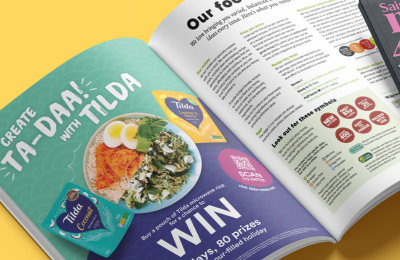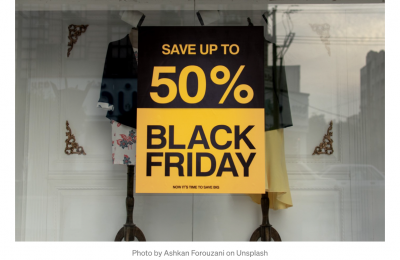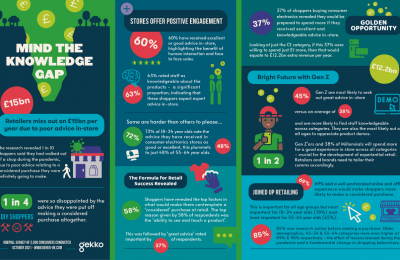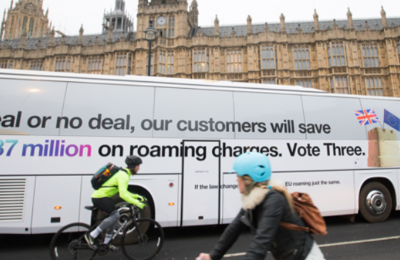Paul McGann, Managing Partner at Brass, explores the rising death toll of retail shops, and shares some tips and advice on how to stay ahead of the growth of online shopping.
Much has been written about the death of the shop. Britain used to be a nation of shopkeepers, perhaps best personified by Ronnie Barker in TV’s classic Open All Hours. But if you wander many suburban high streets now you will see empty shops are everywhere, covered in graffiti and gum. A half empty shopping mall in Scotland was recently put up for auction with a starting bid of just a pound. Now that really is a price cut!
Many of the shops that remain occupied on the high street have been taken over by charities selling things back to us that we bought years ago. Car parking is often inadequate or expensive, another tax on me doing business with you.
It is little wonder we’ve embraced shopping alternatives with glee.
The biggest beneficiary has been online. Shopper behaviour in Britain has changed rapidly and fundamentally over the last decade. Now, according to Kantar around 20% of all UK retail sales occur online and it is still growing fast. Dominated by Amazon, the world’s biggest company selling everything from flowers to footwear and Fortnite games.
Driving mass adoption have been improvements in user experience online: buying power, giving better prices, and ever more efficient and convenient delivery options.
So have we seen the ‘closed’ sign being put on the shop door forever?
It is fair to say that not all retail sectors have been equally affected by the switch to online shopping, at least so far. When we shop for FMCG groceries, online shopping still only accounts for 7.2% of all spend according to Kantar Worldpanel 2018.
Until recently, Morrisons the UK’s 4th biggest supermarket didn’t even offer it. M&S have just bought a big share in Ocado so it can start a food home delivery service for the very first time. I wonder if it was FOMO (fear of missing out) and the intense battle for market share that eventually got them involved. The supermarket costs of selling online, picking complex perishable orders across multiple temperatures and then delivering conveniently to your home nationwide are shrouded in mystery.
I for one am yet to embrace the joy of .com food shopping regularly. For me it still doesn’t deliver. And it seems the vast majority of FMCG grocery shoppers agree and still prefer to visit a shop.
Why is that? I want to smell the fresh bread. To browse categories. Squeeze fruit. Hunt out a special offer. Try something on. Taste something new. Be intrigued by an on-pack promotion. Ask a real person for advice.
We’re actually shopping in shops more frequently for groceries than we have done for years. Reducing the big weekly shop in preference for little and often trips. Topping up in a variety of different supermarkets, discounters and convenience stores.
Does this behaviour give us some clues about how we might reinvigorate the shop? What can shops actually do to fight back?
Here are four areas to think about:
1 Difference
Become a destination store.
If you sell the same ranges as everyone else locally then why should I visit your shop? When products are ubiquitous the shopper defaults to price to select. And on that front, a traditional shop with higher costs may find it harder to compete. So do yourself a favour. Differentiate. Feature alternatives. The upturn in sales at Majestic Wine has in part been credited to a greater focus on exclusive brands. So give a local supplier or challenger brand a chance. It doesn’t have to be everything. But offer some things uniquely.
2 Excellence
Be the expert on what you sell.
Most online shopping is self-service. You’re presented with numerous thumbnail images and expected to know what is best and choose the right thing. Fine for basics, not so helpful for first time, considered or bespoke purchases. You can ask a Bot for advice or read consumer reviews, but do you really trust them? No wonder online shopping returns can be as high as 30%. Make that your advantage. Get to know your shoppers, ask the right questions and then give great advice.
3 Experience
Shopping should be a leisure pursuit, not a chore.
A physical shop creates a whole world of possibility. Engage and entertain shoppers. Delight them to make them linger. Clothing retailer Next, is trialling new services in store like coffee shops, make-up bars and hairdressers to enhance the total shopping experience. Look at the Apple shops, a brand gallery worshipping the latest technology that allows shoppers to touch, feel and try products before they buy. Think what experience could work for your shop?
4 Convenience
Be there where and when shoppers actually want to shop.
Choose locations carefully. Extend your opening hours. Offer more convenient solutions to a variety of different shopper missions, from food on the go to gift wrapping of presents. Better still, seamlessly integrate the physical store and digital so that shoppers have the maximum choice to shop how they want to. Add services that enhance convenience like click and collect.
Amazon Go looks likely to change the goalposts again, with high tech, high street stores on test across the world. Offering grab and go food and impulse products, shoppers can pick up what they want and simply walk out – cameras and sensors on shelf mean payment is automatically linked to their Amazon account!



























